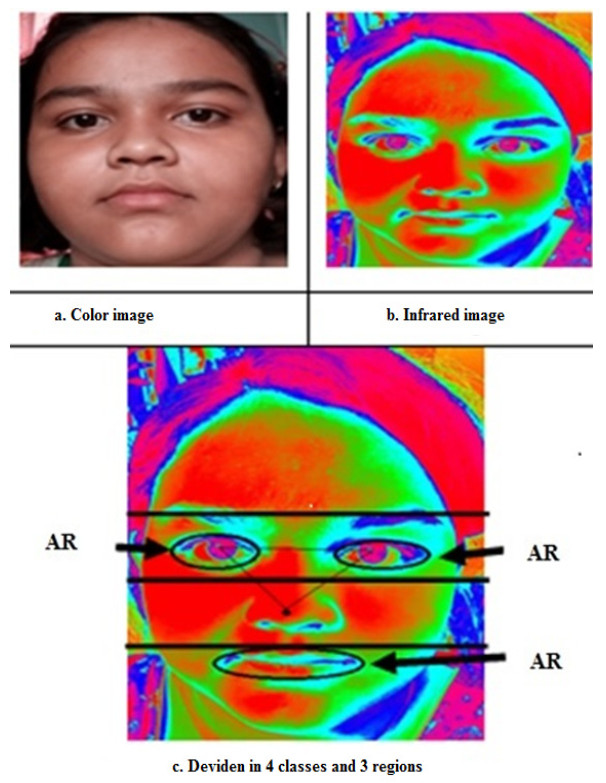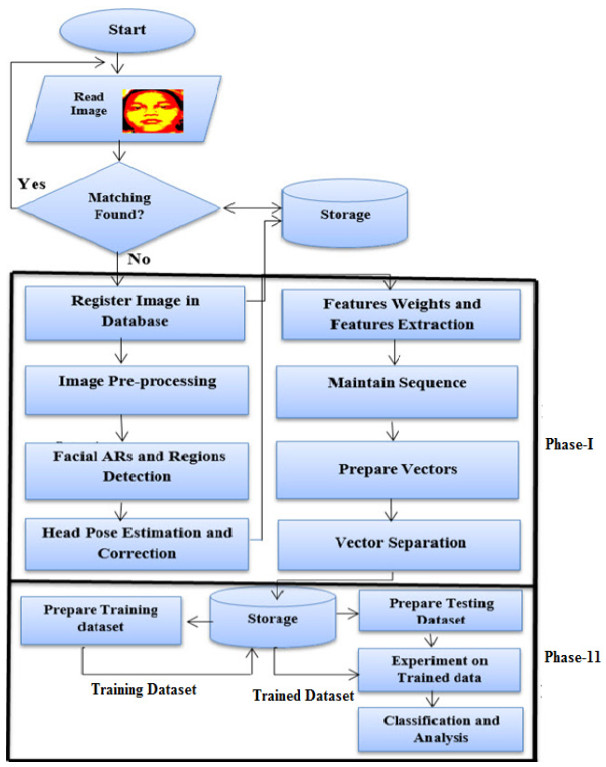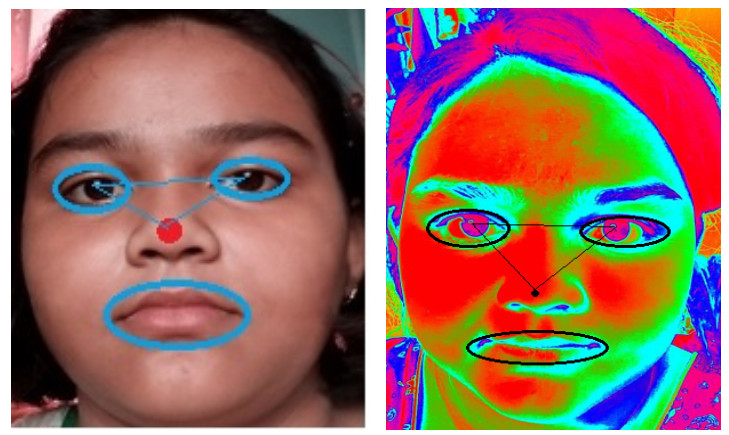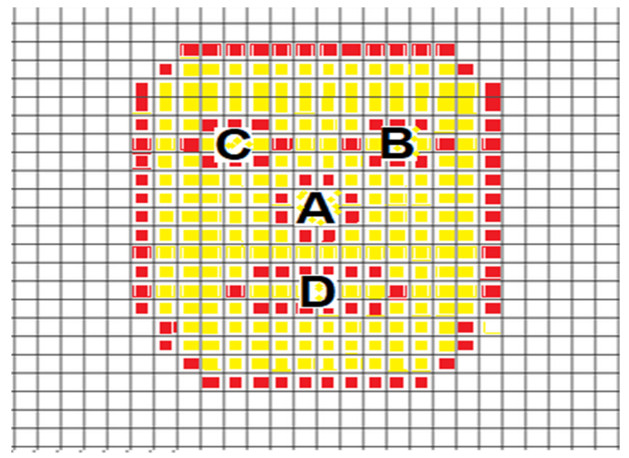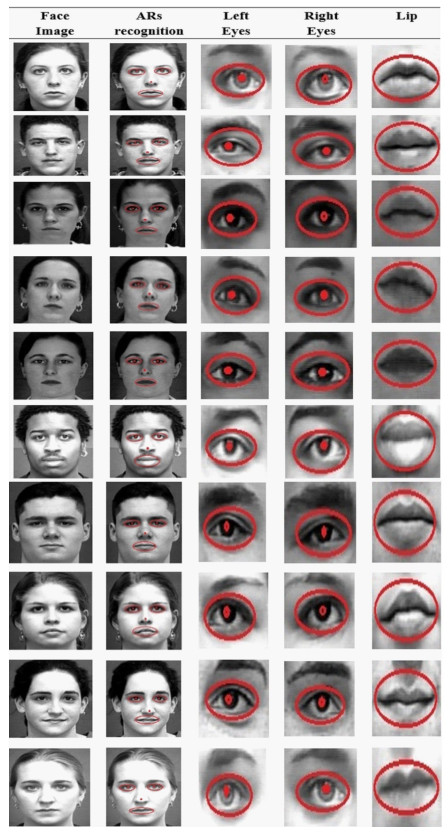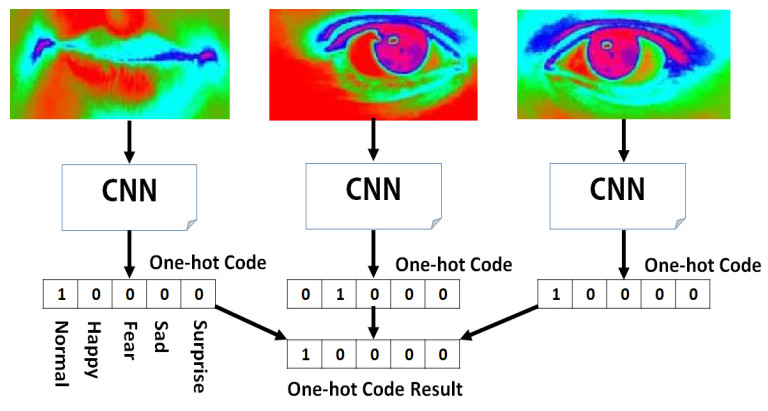1. Introduction
Parkinson’s disease (PD) is an incurable, progressive movement disorder affecting approximately one million Americans (www.pdf.org) and is the 14th leading cause of death in the US (www.cdc.gov). The pathogenesis of PD involves the degeneration of neurons, especially dopaminergic neurons in the substantia nigra of the midbrain [1], and the presence of Lewy bodies/neuritis in various brain regions [2]. Deficiency of the nigro-striatal pathways can cause dopamine depletion-specific symptoms such as motor dysfunctions and multiple non-motor clinical issues. The clinical diagnosis of PD is based on the four cardinal symptoms: tremor, rigidity, bradykinesia, and postural instability [3], which are delayed and subtle. Since the key pathology of PD occurs in the brainstem which is difficult to assess in living patients, it is challenging to monitor PD progression in an unbiased and objective manner. Thus, developing reliable clinical diagnostic methods that are feasible, objective, measurable, specific and sensitive for PD is essential to improve the clinical management of the disease.
A molecular biomarker is a biological molecule found in blood, other bodily fluids or tissues that can be measured as an indicator of a normal or abnormal biological process, or of a disease condition. Molecular biomarkers can be used as a diagnostic or prognostic tool for a specific disease. In PD, biochemical biomarkers which are heavily based on alpha-synuclein (SNCA), the primary structural component of Lewy bodies, have been proposed in the past few years [4]. This mini review will focus on the most recent development of non-SNCA, microRNA (miRNA)-based biomarkers identified in various biofluids for PD diagnosis.
2. miRNAs as informative biomarkers for specific diseases
miRNAs are a family of short (18-22 nucleotides), single-stranded non-coding RNAs that act as gene expression modulators at the post-transcriptional level to fine-tune the expression of specific messenger RNAs (mRNAs) [5, 6]. Many miRNAs can target multiple mRNAs by recognizing short, specific complementary sequences in the mRNAs and control the expression of hundreds to thousands of genes [7, 8]. miRNA expression profiling has been used frequently to identify biomarkers and/or molecular pathways associated with specific human diseases. miRNAs are also known to be highly abundant, tissue-specific, quantifiable, highly stable with non-post process modification, which are “ideal” characteristics of biomarkers. In neurodegeneration, although the pathogenic mechanisms are complex and not fully defined, deregulation of miRNAs has been increasingly recognized to play important roles in the process [9]. There is also emerging evidence describing the important roles of miRNAs in neuronal processes such as neuronal differentiation and neuroplasticity. miRNAs as potential clinical biomarkers for PD has been described extensively in our previous review [10].
3. Biofluids are excellent biomarker resources
Biological fluids or biofluids are liquids originating from human bodies. They are an excellent source for biomarker research as their close proximity to cells can potentially reflect their biochemical contents and hence the biological conditions of the cells [11]. Common biofluids used in biomarker research include peripheral blood, blood serum or plasma, saliva, urine, and cerebral spinal fluid (CSF). Deregulation of blood miRNAs has been significantly correlated with disease-associated genetic variants [12]. Since biofluid sample collection is inexpensive, rapid, simple, and minimally invasive (except for CSF), it has a large advantage over other solid or semi-solid biospecimens for studying disease biomarkers.
4. miRNAs detection in peripheral blood of PD patients
Blood is an ideal source for biomarkers because it can be obtained in a simple, fast, low-cost and minimally invasive manner. The first report of peripheral blood-based miRNA biomarkers for PD was demonstrated in 2011 by a quantitative real-time PCR (qRT-PCR) approach [13]. A set of 3 miRNAs (miR-1, miR-22*, and miR-29a) with lower miRNA expression was identified when compared between de novo and treated PD vs. control and early-onset PD. A second set of 3 miRNAs (miR-16-2*, miR-26a2*, and miR-30a) showed 50% higher expression in treated PD vs. control subjects (Table 1). The second report applied a microarray approach to identify 18 under-expressed miRNAs in peripheral blood mononuclear cells of PD vs. control [14]. The third report used a combination of small RNA next-generation sequencing (small RNA-seq) and exon microarray technologies to investigate miRNA expression in blood leukocytes (white blood cells) of healthy controls as well as PD patients before and after deep brain stimulation (DBS) treatment [15]. A set of 5 miRNAs (miR-4293, miR-378c, miR-18b*, miR-20a, and miR-1249) that are under-expressed in PD vs. DBS has inversed/higher expression in controls whe n compared with PD, suggesting both treatment and disease related changes in miRNA expression. Interestingly, down-regulation of miR-29a, miR-29c, miR-30c, and miR-19b can also be observed in white blood cells of PD DBS-off vs. DBs-on patients and/or in the serum of PD vs. control (see Table 1 and cmiRNAs in plasma/serum section below). Unfortunately, detection sensitivity of miRNA expression among biofluid types (i.e., peripheral blood vs. mononuclear cells vs. white blood cells vs. serum) could not be evaluated mainly due to different technologies (i.e.,qRT-PCT, microarray and next-generation sequencing) used among these studies.
Table 1. Biofluid-based miRNA expression studies in Parkinson’s disease.
| miRNA | Biofluid type | Sample size | Sample type | Method | Reference |
| ↓ miR-29a | Peripheral blood White blood cells Serum | 15 PD vs. 8 CTR 7 PD vs. 6 CTR Discovery set: 10 PD, 10 LRRK2 PD vs. 10 CTR Validation set 1: 20 PD, 20 LRRK2 PD vs. 20 CTR Validation set 2: 65 PD vs. 65 CTR | de novo PD + levodopa/carbidopa treated vs. CTR + early onset PD PD (DBS-off) vs. PD (DBS-on) PD vs. CTR | qRT-PCR (SYBR green) Small RNA-sequencing (ABI SOLiD) TaqMan Low Density miRNA array v.2.0 A, validation by qRT-PCR (TaqMan) | Margis et al., 2011 Soreq et al., 2013 Botta-Orfila et al., 2014 |
| ↓ miR-29c | Peripheral blood mononuclear cell White blood cell Serum | 19 PD vs.13 CTR 7 PD vs. 6 CTR Discovery set: 10 PD, 10 LRRK2 PD vs. 10 CTR Validation set 1: 20 PD, 20 LRRK2 PD vs. 20 CTR Validation set 2: 65 PD vs. 65 CTR | PD vs. CTR PD (DBS-off) vs. PD (DBS-on) PD vs. CTR | Exiqon miRCURY LNA array v.10.0, validation by qRT-PCR (TaqMan) Small RNA-sequencing (ABI SOLiD) TaqMan Low Density miRNA array v.2.0 A, validation by qRT-PCR (TaqMan) | Martins et al., 2011 Soreq et al., 2013 Botta-Orfila et al., 2014 |
| ↓ miR-30c | Peripheral blood mononuclear cell Serum | 19 PD vs.13 CTR Discovery set: 6 PD, 6 MSA-P, 3 MSA-C vs. 5 CTR Validation set: 25 PD, 25 MSA, vs. 25 CTR | PD vs. CTR PD vs. CTR | Exiqon miRCURY LNA array v.10.0, validation by qRT-PCR (TaqMan) TaqMan Low Density miRNA array v.3.0 A and B, validation by qRT-PCR (TaqMan) | Martins et al., 2011 Vallelunga et al., 2014 |
| ↓ miR-19b | Peripheral blood mononuclear cell Serum | 19 PD vs.13 CTR Discovery set: 10 PD, 10 LRRK2 PD vs. 10 CTR Validation set 1: 20 PD, 20 LRRK2 PD vs. 20 CTR Validation set 2: 65 PD vs. 65 CTR | PD vs. CTR PD vs. CTR | Exiqon miRCURY LNA array v.10.0, validation by qRT-PCR (TaqMan) TaqMan Low Density miRNA array v.2.0 A, validation by qRT-PCR (TaqMan) | Martins et al., 2011 Botta-Orfila et al., 2014 |
| ↓ miR-1, miR-22* ↑ miR-16-2*, miR-26a2*, miR-30a | Peripheral blood | 15 PD vs. 8 CTR | de novo PD + levodopa/carbidopa treated vs. CTR + early onset PD levodopa/carbidopa treated vs. CTR | qRT-PCR (SYBR green) | Margis et al., 2011 |
| ↓ miR-335, miR-374a, miR-199a-3p/miR-199b-3p, miR-126*, miR-151-3p, miR-199a-5p, miR-151-5p, miR-126, miR-29b, miR-147, miR-28-5p, miR-30b, miR-374b, miR-301a, miR-26a | Peripheral blood mononuclear cell | 19 PD vs.13 CTR | PD vs. CTR | Exiqon miRCURY LNA array v.10.0, validation by qRT-PCR (TaqMan) | Martins et al., 2011 |
| ↓ miR-320a/b/c, miR-769, miR-92b, miR-16 ↑ miR-199b, miR-1274b, miR-21, miR-150, miR-671, miR-1249, miR-20a, miR-18b*, miR-378c, miR-4293 ↓ miR-4293, miR-378c, miR-18b*, miR-424*, miR-20a, miR-210, miR-1249, miR-93 ↑ miR-4317, miR-143, miR-424 ↓ miR-652, miR-15a*, miR-376c, miR-143 ↑ miR-423, miR-365, miR-486, miR-1260, miR-218 | White blood cell | 7 PD vs. 6 CTR | PD (pre-DBS) vs. CTR PD (pre-DBS) vs. PD (post-DBS) PD (DBS-off) vs PD (DBS-on) | Small RNA-sequencing (ABI SOLiD) | Soreq et al., 2013 |
| A panel of four miRNA biomarkers ↑ miR-1826, ↓ miR-450b-3p ↑ miR-626, miR-505 | Plasma | Discovery set: 32 PD vs.32 CTR Replication set: 42 PD vs.30 CTR Validation set: 30 PD, 4 MSA, 5 PSP vs. 8 CTR | PD (treated) vs. CTR | Agilent miRNA microarray v.3, validation by qRT-PCR (TaqMan) | Khoo et al., 2012 |
| ↑ miR-331-5p | Plasma | 31 PD vs. 25 CTR | PD (non-treated) vs. CTR | TaqMan Low Density miRNA array (3 pools of PD and CTR), then qRT-PCR (TaqMan) | Cardo et al., 2013 |
| ↓ miR-339-5p ↑ miR-223*, miR-324-3p, miR-24 ↓ miR-148b ↑ miR-223*, miR-324-3p, miR-24 | Serum | Discovery set: 6 PD, 6 MSA-P, 3 MSA-C vs. 5 CTR Validation set: 25 PD, 25 MSA, vs. 25 CTR | PD + MSA vs. CTR PD vs. CTR | TaqMan Low Density miRNA array v.3.0 A and B, validation by qRT-PCR (TaqMan) | Vallelunga et al., 2014 |
| ↓ miR-19a | Serum | Discovery set: 10 PD, 10 LRRK2 PD vs. 10 CTR Validation set 1: 20 PD, 20 LRRK2 PD vs. 20 CTR Validation set 2: 65 PD vs. 65 CTR | PD vs. CTR | TaqMan Low Density miRNA array v.2.0 A, validation by qRT-PCR (TaqMan) | Botta-Orfila et al., 2014 |
| ↓ miR-16-2-3p, miR-1294 ↑ miR-338-3p, miR-30e-3p, miR-30a-3p ↓ miR-132-5p, miR-485-5p, miR-127-3p, miR-128, miR-409-3p, miR-433, miR-370, miR-431-3p, miR-873-3p, miR-136-3p, miR-212-3p, miR-10a-5p, miR-1224-5p, miR-4448 ↑ miR-19a-3p, miR-19b-3p, let-7g-3p | Serum (post mortem) CSF (post mortem) | 50 PD vs. 62 CTR 57 PD vs. 65 CTR | PD vs. CTR PD vs. CTR | Small RNA Sequencing (Illumina HiSeq2000) | Burgos et al., 2014 |
PD: Parkinson’s disease; CTR: healthy control; PSP: progressive supranuclear palsy; MSA: multiple system atrophy; LRRK2 PD: G2019S mutation in PD;
DBS: Deep brain stimulation; ↓: down-regulated miRNA expression; ↑: up-regulated miRNA expression. |
5. The potential of circulating miRNAs (cmiRNAs) as disease-related biomarkers
The presence of circulating miRNAs (cmiRNAs) was first described in the serum of diffuse large B-cell lymphoma patients [16]. Since then, many studies have shown that miRNAs exist not only at the cellular level but also as circulating, cell-free miRNAs in serum, plasma, and CSF. There are several hypotheses of how cmiRNAs can be released into circulatory systems: 1) direct leakage of cellular miRNAs as by-products of tissue damage or apoptosis due to certain pathological conditions (such as metastasis or inflammation), 2) active secretion by cells as free miRNAs with or without cell stimulation, and 3) secretion in the form of cell-derived microvesicles (eg. microparticles and exosomes), apoptotic bodies, miRNA-protected proteins (eg. Ago2 and NPM1) or high-density lipoprotein [17, 18, 19, 20, 21, 22].
Similar to miRNAs, cmiRNAs are highly stable and resistant to RNase activity, extreme pH and temperature [23, 24]. cmiRNA expression are also known to correlate with various human diseases, especially cancers [17]. In PD, we performed a proof-of-concept study and first reported a panel of four cmiRNA as potential PD biomarkers [25]. With high stability and capacity to reflect disease status, cmiRNAs have great potential as molecular biomarkers for diagnosis and prognosis of neurodegenerative diseases. Readers can further refer to a review by Sheinerman and Umansky [26] on cmiRNAs biomarkers for various neurodegenerative diseases and three common approaches used for such studies. In Alzheimer’s disease (AD), miRNA expression changes in brain and CSF have provided insights into the disease pathways [27]. Therefore, besides their utility as disease biomarkers, cmiRNA may provide new insights for the pathogenesis of PD.
6. Identification of cmiRNA biomarkers in blood plasma/serum for PD
We published the first report of four plasma-based cmiRNAs (miR-1826, miR-450b-3p, miR-626, and miR-505) as a panel of potential biomarkers for PD using Agilent microarrays followed by a qRT-PCR approach [25]. A validation study using a new, independent cohort has been carried out to confirm the reproducibility and robustness of these candidate biomarkers. One year later, another group used the TaqMan low-density microarray cards and qRT-PCR and found miR-331-5 significantly up-regulated in plasma of PD patients compared with healthy controls [28]. Both findings are mutually exclusive and could be explained by used of 1) different discovery platforms which may have different detection sensitivities, 2) different statistical algorithms to identify differentially-expressed cmiRNAs, and 3) treated PD patients in the formal and naïve PD patients in the later report.
Recently, three additional studies on serum-based cmiRNA biomarkers for PD have been reported. Four differentially-expressed cmiRNAs (miR-399-5p, miR-223*, miR-324-3p, and miR-24) were identified and validated in PD and MSA (multiple system atrophy) vs. control subjects [29]. The same cmiRNAs (except miR-339-5p) were identified in PD vs. control, in addition to miR-30c and miR-148b which were down-regulated. Interestingly, miR-30c was also found down-regulated in the peripheral blood mononuclear cell of PD when compared with control. Another report used PD and LRRK2 (leucine-rich repeat kinase 2) PD as discovery and first validation cohort to identify 4 statistically significant cmiRNAs (miR-29a, miR-29c, miR-19a, and miR-19b) in PD vs. control in a second validation study [30]. Strikingly, down-regulation of miR-29a, miR-29c, miR-30c, and miR-19b were also shown in previous blood-based biomarker studies [13, 14]. Repeated detection of similar miRNAs regardless of biofluid types and detection technologies make these miRNAs strong biofluid-based biomarker candidates for PD which need to be validated. In another miRNA expression profiling study using small next-generation sequencing on post mortem sera, 5 differentially-expressed cmiRNAs were identified between PD and control [31].
7. cmiRNA expression is altered in PD’s CSF
Small RNA-seq was also recently used to detect 17 differentially-expressed cmiRNAs in post mortem CSF of PD or AD patients vs. healthy controls [31]. Although one differentially-expressed cmiRNA was identified in both CSF and serum for AD, there was no overlapping cmiRNA candidate in CSF and serum from the same PD patients. This finding suggests that cmiRNA expression in serum may not be corresponding to those in CSF which is directly connected to the central nervous system; CSF and serum may not provide similar cmiRNA expression profiles in this case. Moreover, the viability of cmiRNA expression in postmortem vs. fresh serum and CSF is relatively unknown and worth investigation.
Table 1 summarizes the biofluid-based miRNA studies for PD mentioned above.
8. Current limitations of biofluid-based miRNA biomarkers
Biofluid-based miRNA biomarker research for PD has been emerging rapidly. cmiRNAs are envisioned to become potential biomarkers for early detection and progression of PD. However, there are several impeding factors that may come into play. First, miRNAs usually exist in much lower amounts in biofluids than tissues. Hence, depending on the sensitivity of the detection techniques, they can remain undetected and be missed as potential biomarkers. Fortunately, recent advancements of non-biased amplification and enrichment techniques have substantially improved the detection sensitivity of miRNA expression. Second, biomarker research is known for its complexity and difficulty in correlating different biomarker data from different reports. As shown in Table 1, biomarkers in bodily fluids are screened and analyzed by a variety of techniques. Variations may also involve sample collection and storage, sample preparation, data normalization and data analysis [10]. Therefore, a unifying method and/or technique should be applied for each specific biomarker in general. However, in a “real-world” clinical setting, standardization from the beginning of sample collection to assay processes may not be feasible or realistic. This also brings us to the third limitation where either small or no validation studies were performed to confirm the reproducibility and robustness of these biofluid-based biomarker candidates and its assays; this drawback has further delayed the incorporation of molecular biomarkers into routine preclinical or clinical applications. Fourth, the presence of miRNAs in biological fluids as a disease indicator remains a subject of considerable debate. Although deregulation of miRNAs has been increasingly recognized to play important roles in neurodegeneration [9], the potential of utilizing miRNAs to reflect pathogenic changes in the brain needs to be further investigated and validated.
9. Future perspectives
This mini review shows that miRNAs in bodily fluids hold promise as potential molecular biomarkers for PD. Unique characteristics of miRNAs and cmiRNAs make them highly attractive as molecular biomarkers. Follow-up validation studies and standardization are critical to ensure successful development of sensitive and specific biomarkers for PD. The finding of stable cmiRNAs in biofluids suggests their possible function as mediators in cell-cell communication in response to biological stimuli [32]. Thus, it is possible that cmiRNAs in serum or plasma may directly or indirectly reflect the pathological status of the brain. It is also known that miRNAs can be transported by exosomes which are lipid microvesicles of endocytic origin secreted by many cell types, including neurons, astrocytes, oligodendrocytes, and microglia [33, 34, 35, 36]. Recent evidence has shown the involvement of exosomes in the pathogenesis of PD [37]. Although the association of exosome-based miRNAs in neurodegeneration has not been established, it is worth future investigation.
In AD, cmiRNAs in CSF and serum have been identified to correlate with the severity of disease such as Braak stages, neurofibrillary tangle and plaque-density scores [27, 31]. Hence, future investigation of cmiRNA expression in correlation with PD severity (e.g. SNCA accumulation or Lewy bodies) may accelerate discovery of progression biomarkers for PD. In summary, establishing and validating biofluid-based miRNA biomarkers may facilitate the development of objective diagnostic and prognostic molecular tools for PD to translate basic research discovery to clinical setting.
Acknowledgements
S.K. Khoo is supported by grants from the Michael J. Fox Foundation for Parkinson’s Research.
Conflict of interest
All authors declare no conflict of interest.









 DownLoad:
DownLoad: 

